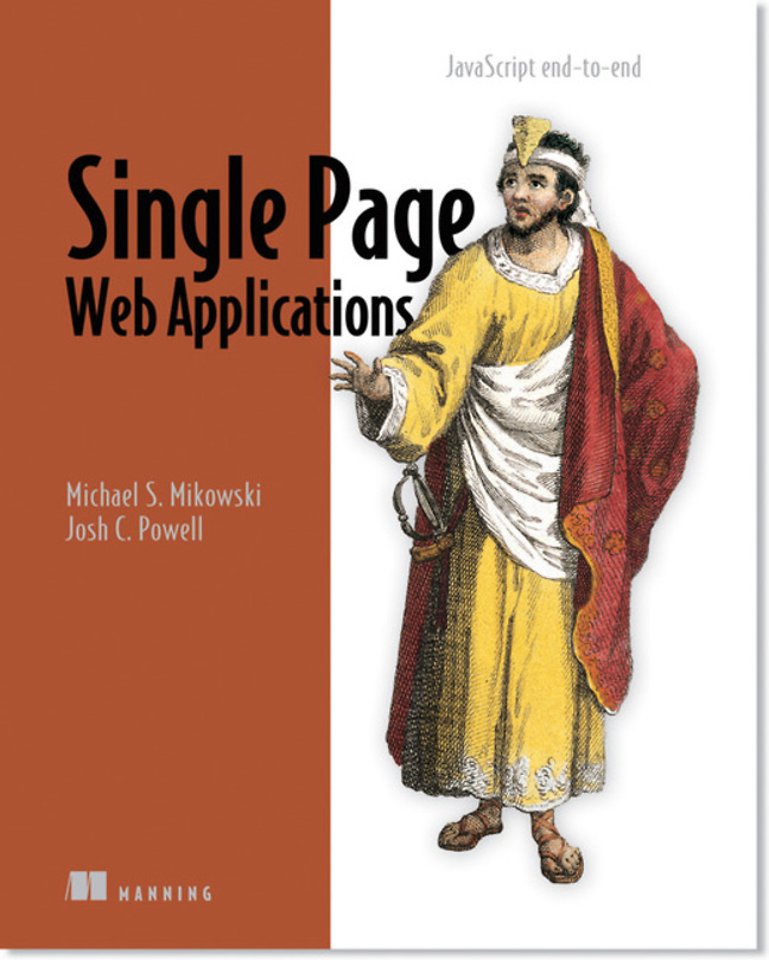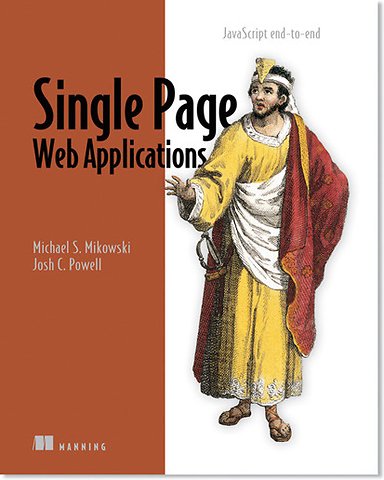


Michael Mikowski has worked on many commercial SPAs and a platform that processes over...
Meer over de auteursSingle Page Web Applications
JavaScript end-to-end
Samenvatting
If your website is a jumpy collection of linked pages, you are behind. Single page web applications are your next step: pushing UI rendering and business logic to the browser and communicating with the server only to synchronize data, they provide a smooth user experience, much like a native application. But, SPAs can be hard to develop, manage, and test.
'Single Page Web Applications' shows how your team can easily design, test, maintain, and extend sophisticated SPAs using JavaScript end-to-end, without getting locked into a framework. Along the way, you'll develop advanced HTML5, CSS3, and JavaScript skills, and use JavaScript as the language of the web server and the database.
What's Inside
- Design, build, and test a full-stack SPA
- Best-in-class tools like jQuery, TaffyDB, Node.js, and MongoDB
- Real-time web with web sockets and Socket.IO
- Touch controls for tablets and smartphones
- Common SPA design mistakes
This book assumes basic knowledge of web development. No experience with SPAs is required.
Specificaties
Over Josh Powell
Inhoudsopgave
U kunt van deze inhoudsopgave een PDF downloaden
Preface
Acknowledgments
About this book
About the cover illlustration
Part 1: Introducing SPAs
1. Our first single page application
1.1 Definition, a little history, and some focus
1.2 Build our first SPA
1.3 The user benefits of a well-written SPA
1.4 Summary
2. Reintroducing JavaScript
2.1 Variable scope
2.2 Variable hoisting
2.3 Advanced variable hoisting and the execution context object
2.4 The scope chain
2.5 JavaScript objects and the prototype chain
2.6 Functions—a deeper look
2.7 Summary
Part 2: The SPA client
3. Develop the Shell
3.1 Grok the Shell
3.2 Set up the files and namespaces
3.3 Create the feature containers
3.4 Render the feature containers
3.5 Manage the feature containers
3.6 Manage application state
3.7 Summary
4. Add feature modules
4.1 The feature module strategy
4.2 Set up feature module files
4.3 Design method APIs
4.4 Implement the feature API
4.5 Add frequently needed methods
4.6 Summary
5. Build the Model
5.1 Understand the Model
5.2 Set up the Model and other files
5.3 Design the people object
5.4 Build the people object
5.5 Enable sign-in and sign-out in the Shell
5.6 Summary
6. Finish the Model and Data modules
6.1 Design the chat object
6.2 Build the chat object
6.3 Add Avatar support to the Model
6.4 Complete the Chat feature module
6.5 Create the Avatar feature module
6.6 Data binding and jQuery
6.7 Create the Data module
6.8 Summary
Part 3: The SPA server
7. The web server
7.1 The role of the server
7.2 Node.js
7.3 Advanced routing
7.4 Adding authentication and authorization
7.5 Web sockets and Socket.IO
7.6 Summary
8. The server database
8.1 The role of the database
8.2 An introduction to MongoDB
8.3 Use the MongoDB driver
8.4 Validate client data
8.5 Create a separate CRUD module
8.6 Build the Chat module
8.7 Summary
9. Readying our SPA for production
9.1 Optimize our SPA for search engines
9.2 The cloud and third-party services
9.3 Caching and cache busting
9.4 Summary
Appendix A: JavaScript coding standard
Appendix B: Testing an SPA
Index
Anderen die dit boek kochten, kochten ook
Net verschenen
Rubrieken
- aanbestedingsrecht
- aansprakelijkheids- en verzekeringsrecht
- accountancy
- algemeen juridisch
- arbeidsrecht
- bank- en effectenrecht
- bestuursrecht
- bouwrecht
- burgerlijk recht en procesrecht
- europees-internationaal recht
- fiscaal recht
- gezondheidsrecht
- insolventierecht
- intellectuele eigendom en ict-recht
- management
- mens en maatschappij
- milieu- en omgevingsrecht
- notarieel recht
- ondernemingsrecht
- pensioenrecht
- personen- en familierecht
- sociale zekerheidsrecht
- staatsrecht
- strafrecht en criminologie
- vastgoed- en huurrecht
- vreemdelingenrecht





